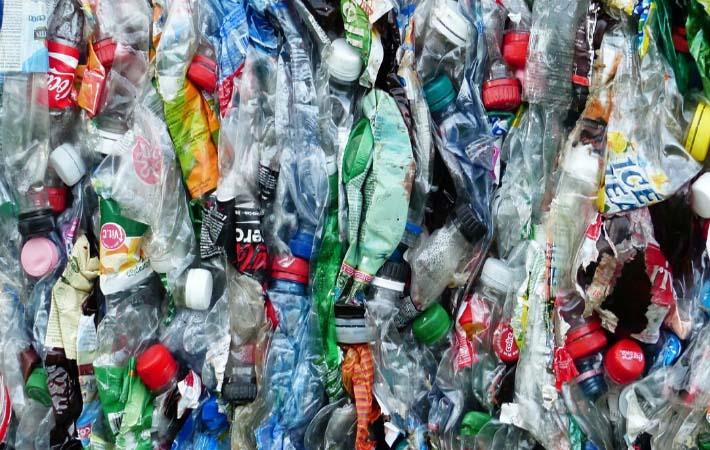Interviews
London air has more microplastics: King's College
04 Jan '20
4 min read

Pic: Kings College London
Air in London has more microplastics than any other major city examined so far, scientists from the King’s College London report. The team carried out the first study of microplastics in the atmosphere in London to determine what people within the city might be exposed to and where this comes from. The team plans to carry out more studies on microplastics.
The study has been published in Environment International, they found that microplastics are present in the air in London at higher abundances than any other major city examined so far. Their findings indicate that cities are a likely source of microplastics to the wider environment with the weather and meteorological patterns having little influence on their abundance in this urban environment.
Microplastics are made through the fragmentation or scuffing of larger pieces of plastic, such as from degraded plastic litter or fibres from synthetic clothing. They are also purposefully manufactured for a range of applications, although the EU has proposed to restrict the use of intentionally added microplastics in products. There may be other sources of microplastics which have not been discovered yet.
The scientists used a rain gauge with a funnelled surface to collect atmospheric deposition (dust naturally settling out of the atmosphere) in central London during winter 2018. This was filtered and analysed using a specialist instrument which detects unique chemical ‘fingerprints’ of the particles to identify their composition.
The study found that microplastics were present in every sample taken in London and greater than previously reported by any other study. Levels of microplastics were higher in London compared to Dongguan, China and Paris, France and Hamburg, Germany.
Levels of microplastics in London are almost 20 times greater than in the French Pyrenees when comparing particles of the same size.
The study found that 92 per cent were fibrous microplastics that come from the wear down of plastic textiles including clothing, upholstery and carpets. The other sources include fragments from larger plastic products, films from thin plastic items such as disposable plastic bags and foam from polystyrene items.
Microplastics can become airborne and travel as far as 95 kilometres by the wind. However, local sources have a greater influence on deposition in central London.
Lead author Dr. Stephanie Wright, UKRI Rutherford Fellow in the School of Population Health & Environmental Sciences at King’s said: “We found some of the highest reported levels of microplastics in atmospheric dust, with local sources appearing influential. Fibres were the most abundant for the size range we looked at, mirroring the marine environment. From where microplastics are emitted and for how long they are airborne remain unknown but are key for understanding long-range transport potential to the wider environment. An important next step in predicting risk is to estimate human exposure to airborne microplastics.”
Although the impact of microplastics on humans is still relatively unknown, occupational studies indicate that workers exposed to very high levels of plastic dust suffer chronic inflammation of the airway, in some (worst) cases interstitial lung disease and tissue scarring. Despite not all sources of microplastics being known and the impact on human health, the scientists suggest there can be ways to mitigate exposure.
“There is no conclusive evidence base to suggest this is necessary, but if desired, avoid products which microplastics have been found to contaminate (bottled water, salt and some seafood product, such as shellfish). Additionally, be conscious of adequate ventilation when carrying out activities which may emit microplastics, such as hoovering and laundering. All this should, of course, be weighed against the alternative, for example, opening a window may not be the best option if you live next to the main road or drinking anything other than bottled water may not be safe in some regions of the world,” Wright said.
The team is now looking at longer-term patterns of microplastic deposition and will begin to look at spatial distribution, comparing different types of environments such as rural, urban, coastal and industrial, to understand its entry to the wider environment. They are also quantifying microplastics in size fractions capable of depositing in the human airway, in order to begin to understand exposure via the air and the consequences for human health.
The study has been published in Environment International, they found that microplastics are present in the air in London at higher abundances than any other major city examined so far. Their findings indicate that cities are a likely source of microplastics to the wider environment with the weather and meteorological patterns having little influence on their abundance in this urban environment.
Microplastics are made through the fragmentation or scuffing of larger pieces of plastic, such as from degraded plastic litter or fibres from synthetic clothing. They are also purposefully manufactured for a range of applications, although the EU has proposed to restrict the use of intentionally added microplastics in products. There may be other sources of microplastics which have not been discovered yet.
The scientists used a rain gauge with a funnelled surface to collect atmospheric deposition (dust naturally settling out of the atmosphere) in central London during winter 2018. This was filtered and analysed using a specialist instrument which detects unique chemical ‘fingerprints’ of the particles to identify their composition.
The study found that microplastics were present in every sample taken in London and greater than previously reported by any other study. Levels of microplastics were higher in London compared to Dongguan, China and Paris, France and Hamburg, Germany.
Levels of microplastics in London are almost 20 times greater than in the French Pyrenees when comparing particles of the same size.
The study found that 92 per cent were fibrous microplastics that come from the wear down of plastic textiles including clothing, upholstery and carpets. The other sources include fragments from larger plastic products, films from thin plastic items such as disposable plastic bags and foam from polystyrene items.
Microplastics can become airborne and travel as far as 95 kilometres by the wind. However, local sources have a greater influence on deposition in central London.
Lead author Dr. Stephanie Wright, UKRI Rutherford Fellow in the School of Population Health & Environmental Sciences at King’s said: “We found some of the highest reported levels of microplastics in atmospheric dust, with local sources appearing influential. Fibres were the most abundant for the size range we looked at, mirroring the marine environment. From where microplastics are emitted and for how long they are airborne remain unknown but are key for understanding long-range transport potential to the wider environment. An important next step in predicting risk is to estimate human exposure to airborne microplastics.”
Although the impact of microplastics on humans is still relatively unknown, occupational studies indicate that workers exposed to very high levels of plastic dust suffer chronic inflammation of the airway, in some (worst) cases interstitial lung disease and tissue scarring. Despite not all sources of microplastics being known and the impact on human health, the scientists suggest there can be ways to mitigate exposure.
“There is no conclusive evidence base to suggest this is necessary, but if desired, avoid products which microplastics have been found to contaminate (bottled water, salt and some seafood product, such as shellfish). Additionally, be conscious of adequate ventilation when carrying out activities which may emit microplastics, such as hoovering and laundering. All this should, of course, be weighed against the alternative, for example, opening a window may not be the best option if you live next to the main road or drinking anything other than bottled water may not be safe in some regions of the world,” Wright said.
The team is now looking at longer-term patterns of microplastic deposition and will begin to look at spatial distribution, comparing different types of environments such as rural, urban, coastal and industrial, to understand its entry to the wider environment. They are also quantifying microplastics in size fractions capable of depositing in the human airway, in order to begin to understand exposure via the air and the consequences for human health.
Fibre2Fashion News Desk (SV)
Popular News
Leave your Comments
Editor’s Pick
































-Ltd..jpg?tr=w-120,h-60,c-at_max,cm-pad_resize,bg-ffffff)





.jpg?tr=w-120,h-60,c-at_max,cm-pad_resize,bg-ffffff)
.jpg?tr=w-120,h-60,c-at_max,cm-pad_resize,bg-ffffff)






